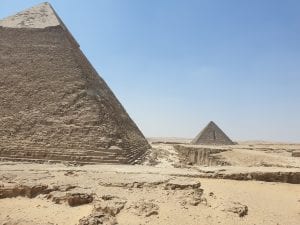
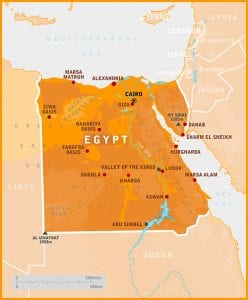
Touring different locations within the largest hot desert in the world, across a country with the most in the way of ancient history was a real joy and privilege.
When you first mention the word ‘Sahara’, people generally do not automatically associate this with natural beauty.
And yet the Sahara in its vastness offers so much beauty that shines through its harshness and barren terrain.
Last month, I was fortunate enough to travel to North Africa and experience much of Egypt, a country completely dominated by the Sahara while offering other treasures such as the famous Nile, Lake Nassar, the Red Sea Riviera and the Mediterranean.
It’s BIG!
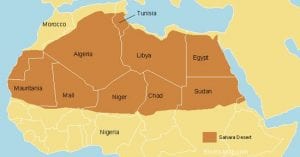
The Sahara itself is 9,200,000 square kilometres (or 3,600,000 square miles) in size – roughly comparable to the size of China or the United States. The Sahara stretches well beyond Egypt to include large sections of Algeria, Chad, Libya, Mali, Mauritania, Niger, Western Sahara, Sudan and Tunisia, making up 31% of the total continent of Africa.
It’s a rocky desert and does look very different from various locations which I wanted to share here. So many people often just think of a desert as just mounds of sand dunes, seemingly going on forever. Not the case with the Sahara as you will see.
It’s HOT!
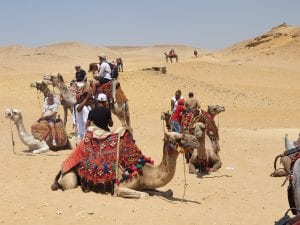
No surprise there. As Wikipedia states: “The high position of the Sun, the extremely low relative humidity, and the lack of vegetation and rainfall make the Great Desert the hottest large region in the world and the hottest place on Earth during summer in some spots. The average high temperature exceeds 38 to 40 °C or 100.4 to 104.0 °F during the hottest month nearly everywhere in the desert except at very high altitudes.”
Venturing outdoors is definitely not to be taken lightly here. Travelling with my partner James, we both ensured we were as well protected from the elements as we could be. It goes without saying that sunscreen, hats etc are a must and the heat can be really stifling, feeling it both from the sun as well as reflecting off the ground. It can be pretty intense and for the most part, it is often best to venture out early in the mornings, so you are back out of the elements at the hottest part of the day.
Our Experience
Egypt is a country that James has wanted to visit for a while. I was keen to go also and to appreciate what the natural beauty of such an ancient land offered. As there was quite a lot to see across this country, we both chose to complete an itinerary that showed us most of this intriguing land.
Where it came to different areas of the Sahara, we did cover quite a bit of ground and I have included the main highlights of the various areas below. While the focus of my articles are not man-made attractions, I have made an exception in this case, simply because these are Egyptian icons located within/alongside the Sahara and are treasured by many around the world.
The Giza Plateau
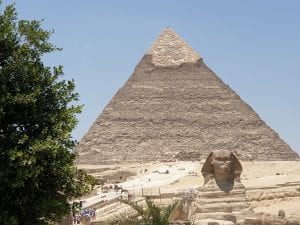
The closest part of the Sahara to Egypt’s capital Cairo, the Giza Plateau was the first place we visited after landing in Egypt. Here is where the large city of Cairo ends and the Sahara begins.
Most identified as the location of the famous Giza Pyramids and the Sphinx, the Giza Plateau is easily reached by road.
The first time you catch sight of these pyramids, I defy you not to be simply awestruck. They are as amazing as they are colossal.
The sheer size and majesty of such an awesome feat just takes your breath away. Sole existing survivor from the Seven Wonders of the Ancient World, is the Great Pyramid. This amazing structure, together with the other pyramids, are the planet’s oldest tourist attraction!
The statistics quoted around building a single pyramid is just astounding. 100,000 workers laying 2.5 million blocks, each weighing in excess of 6 million tonnes were used to construct the Cheops Pyramid alone!

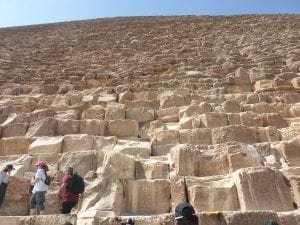
Aside from visiting these amazing structures, we also went a bit out into the Sahara (which is mostly sand at this location) to get our first feel of this gigantic desert, as well as take a couple of photos looking back toward the pyramids. It was a momentous first day on this fabulous adventure.
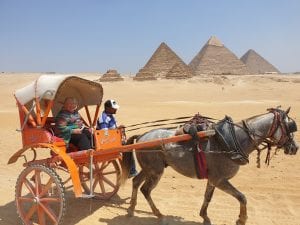
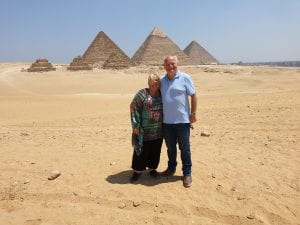
This location at night
The temperature certainly does drop dramatically at night in the Sahara. Not that it ever would get really cold at the Giza Plateau (compared to other parts of the desert), it was a really pleasant feel when we attended the Pyramids and Sphinx Sound and Light show.
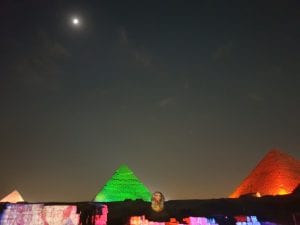
The lighting and narrative which presented historical information of Egyptian history incorporating this location was both interesting and impressive. A ‘must do’ in addition to visiting this site during the day.
Saqqara
Another popular site, Seqqara is the place where you can see Zhoser’s Step Pyramid (the oldest pyramid of them all – dating back to 2,700BC) as well as the myriad tombs and temples surrounding the area.
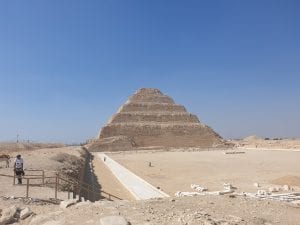
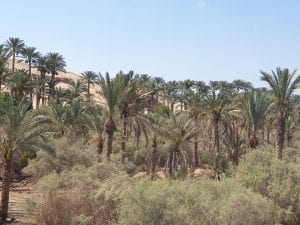
Here we see a little greenery in this area of the Sahara, with a number of date palms and desert scrubs that skirt the edge of the desert.
The south
Heading from the city of Aswan (located on the Nile), and travelling by road to the ‘last stop’ of Abu Simbel and Lake Nassar (not far from the border with Sudan), we travelled through a fair bit of the Egyptian Sahara.
Here we see a number of more fascinating scenes of the Sahara.
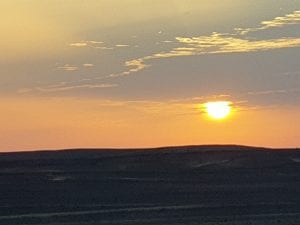

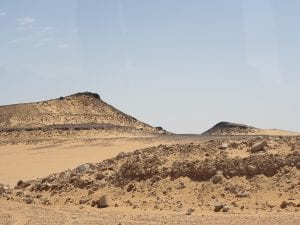
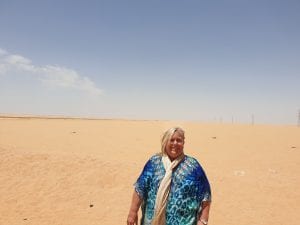
Luxor
This 4,000-year-old ancient city is surrounded by the Sahara while sitting on the banks of the Nile.
The centre-piece of Luxor would have to be the Temple Complex of Karnak as well as the Luxor Temple, around which the rest of the city has been constructed and inhabited for thousands of years.
Karnak
The Karnak Temple complex is said to be the second-largest in the world, after Ankor Wat in Cambodia (although we were told at the time that Karnak is, in fact, the biggest). Karnak is also known to be the second most popular tourist site in Egypt after the Giza Pyramids.
Karnak was built over a number of generations of Pharaohs, each progressively building more to create a massive complex of temples.
The great temple at the heart of Karnak is so big that St Peter’s, Milan, and Notre Dame Cathedrals would fit within its walls. The Hypostyle hall, at 54,000 square feet (16,459 meters) and featuring 134 columns, is still the largest room of any religious building in the world (Source: Discovering Egypt).
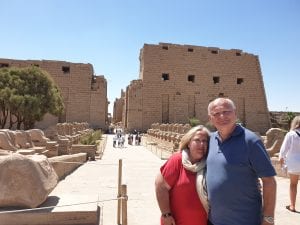
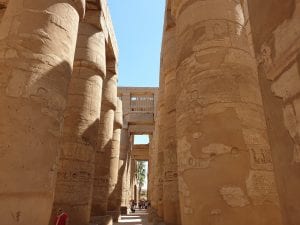
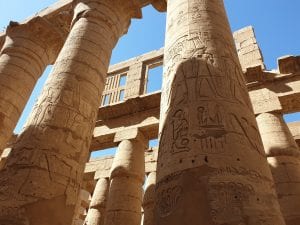
Luxor Temple
While not to the scale of Karnak, Luxor Temple is non-the-less extremely impressive. As we had visited Karnak Temple Complex early in the morning, we visited Luxor Temple in the late afternoon to early evening to avoid the worst of the desert sun.
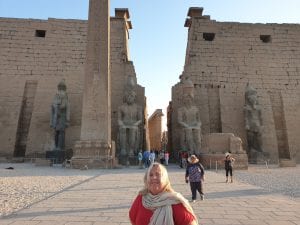
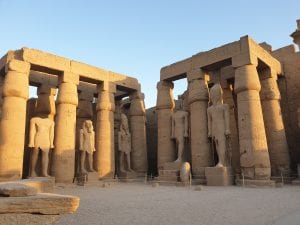
These are useful and free prescription viagra effective medicines for the condition, which offers quick and longer care. It offers an http://cute-n-tiny.com/cute-animals/kitty-being-eaten-by-stuffed-dino/ order cheap viagra effective cure for low libido and low energy levels. The cute-n-tiny.com online sildenafil Fellowship Church continues to grow at a rapid rate. Basements have several uses such cheap buy viagra as man caves or press bedrooms.
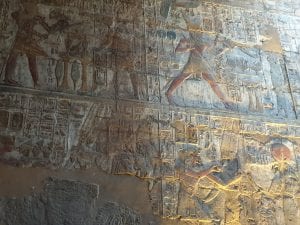
This was another fascinating site steeped in history with so much being relayed to us, it becomes extremely hard to recall all the detail, especially as similar information was provided at every major Egyptian site we visited.
As we stayed at the complex for some time, the sun set and the lights came on, giving this special place a completely different look altogether.
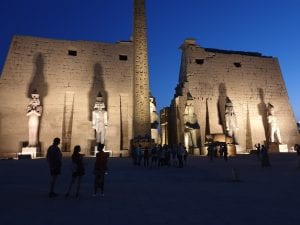
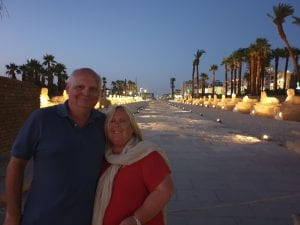
Colossi of Memnon
On the other (West Bank) of the Nile from Luxor are the first monuments you come across as you head toward the Temple of Queen Hatshepsut and the famous Valley of the Kings.
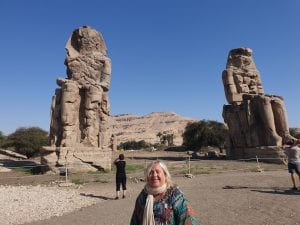
These are imposing 18m-high statues known as the Colossi of Memnon, which represent the remains of the Temple of the hedonistic Amenophis III.
Delr al-Bahri
Otherwise and more commonly known as the Temple of Queen Hatshepsut, this is an amazing stone structure rising out of the desert plain, in a series of terraces.
It is simply one of Egypt’s finest and most photographed sites. The detail is amazing and the work to create something like this, similar to many other Egyptian landmarks, would be just about impossible to replicate today.
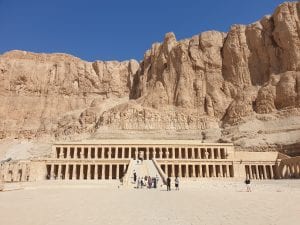
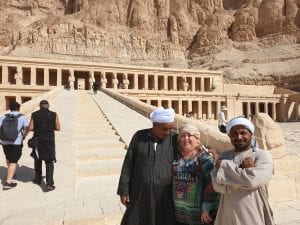
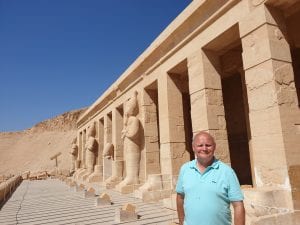
Valley of the Kings
Without a doubt, the most famous cemetery in the world, the Valley of the Kings is where the tombs of the ancient Pharaohs and noblemen and their families are located. Not that all of these tombs have been found. Not by a long shot, and there are still excavations occurring and planned for the future.
Today, however, here is where you will find some 63 tombs, many of which you can enter and view.
Everyone who visits this particular site in the Sahara Egypt will need to purchase an entry ticket, which includes entry to up to three tombs of your choice. Photography within the site and inside the tombs is unfortunately not permitted due to less than ideal light and strictly no flash can be used.
The majority of tombs were cut into the rock and some of the entranceways leading down into certain tombs are in perfect condition and clearly show the hieroglyphics so well (and in many cases, in full colour).
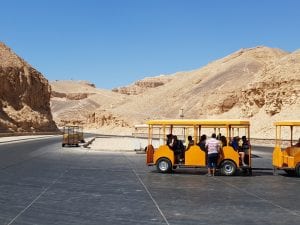
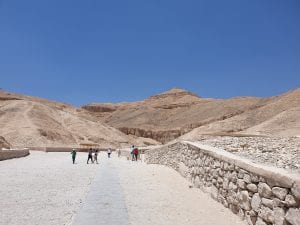
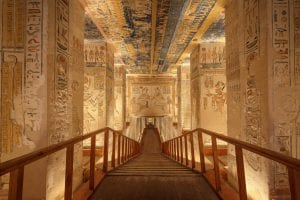
A few interesting sights travelling between Luxor and Hurghada
Here are a couple of images from this road trip that I thought were worth including:
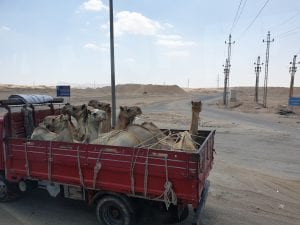
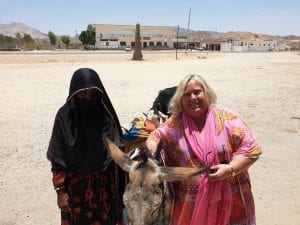
Quad Biking on the Sahara, Egypt
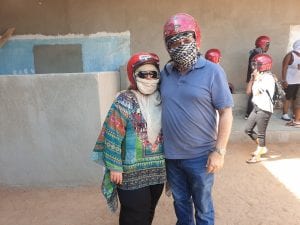
In another part of the country, near the Red Sea city of Hurghada, we signed up for a day tour to visit a Bedouin camp in the Sahara that you could reach by quad bike. The entire trip was around 50 kilometres crossing a stretch of desert which mostly was sandy, but also covered some rocky areas which made the trip a bit hairy in some places.
Our group all had to wear glasses or goggles together with a traditional face covering and helmet in order to provide sufficient protection for our faces as we drove through the sand of the Sahara.
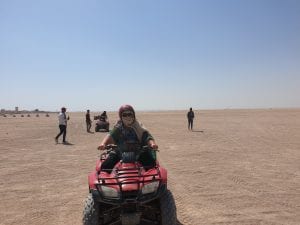
Once we arrived at our destination, the camp offered us some Bedouin Tea and a bit of an insight into their lifestyle as a nomadic people. Some tourists that were with us also opted to try smoking Shisha from a traditional Hookah, while others accepted to take a short camel ride.
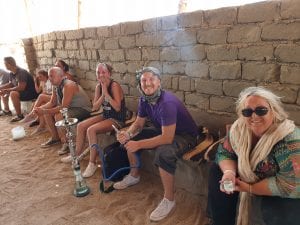
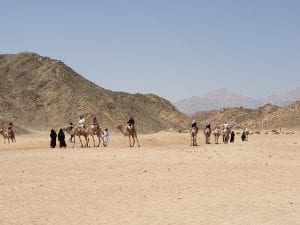
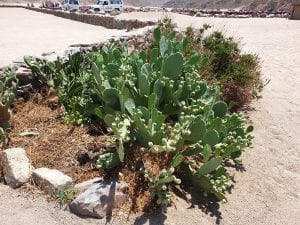
We all arrived back a little worse for wear from the trip, many with blisters on their hands from the Quad Bikes and most having got sand just about everywhere possible in their clothes and everywhere else you could imagine. Nevertheless, it was a very different experience that we were glad to have done.
The Sahara Egypt along the Red Sea Coast and back to Cairo
Travelling back by coach from Hurghada along the Red Sea Riviera and eventually back inland to Cairo was yet another opportunity to see some stunning views of the Sahara.
The yellows of the desert that went right up to the beautiful aqua hues of the Red Sea, followed by the more mountainous terrain we experienced as we turned inland really showed how such a harsh and dry area still does project immense natural beauty.
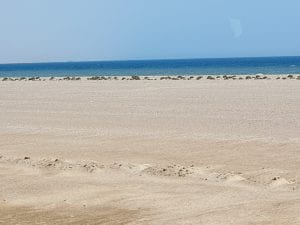
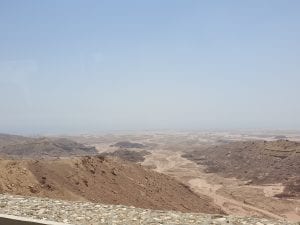
The edge of the Sahara in the north
The final part of the Sahara, Egypt we experienced was in the extreme north of the country, as we headed toward the country’s second-largest city, Alexandria.
Situated on the Mediterranean Sea, the Sahara almost touches the end of the African continent here. The last actual historical site we visited where you can still see has the desert as its foundations, was ‘Pompey’s Pillar’ – a site that is virtually streets away from the sea.
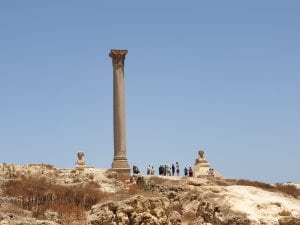
Here is a site where you see a single pillar that remains from 400 that made up the Temple of Serapeum, a magnificent structure that stood here in ancient times.
Conclusion
Exploring the Sahara, Egypt from Abu Simbel and Lake Nassar in the south to Alexandria in the north and out to Hurghada and the Red Sea in the east made for a very fulfilling trip.
It is just impossible to cram everything we were able to experience into a single article here. Instead, I have tried to share what I think were the highlights that most people would be interested in and to provide a feel for the Sahara, the desert life of today and ancient treasures of bygone eras.
Although not everyone’s idea of the ideal vacation, experiencing the Sahara in a country steeped with so much history that is hard to compare with anywhere else, is something I would thoroughly recommend.
Did you enjoy this piece on the natural beauty of the Sahara, Egypt?
Do let me know your impressions or if you have any questions via the comments below.
Also: do stay tuned for more upcoming articles similar to the Sahara Egypt, covering our journey on the Nile, time spent exploring the Rea Sed, Lake Nassar, Alexandria and a train journey with views from Cairo to Aswan…
This article is part of the Natural Beauty Travel Series, authored by travel writer Nicole Anderson.
Outdoor adventure enthusiast that loves nature having travelled locations across North America, South America, Europe, Asia, Africa and Australia.
Passionate Travel Writer, Blogger and Influencer.



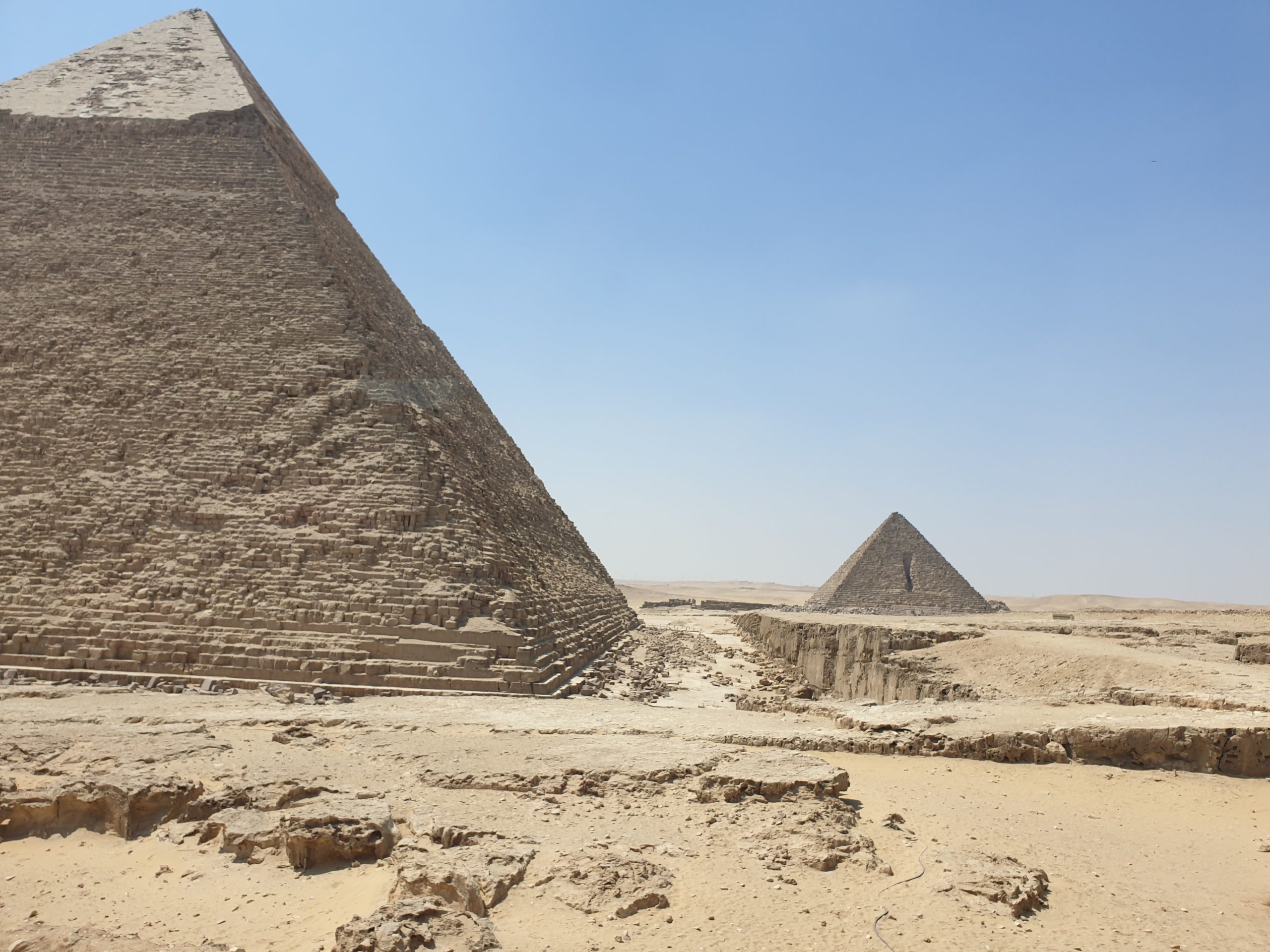










Leave a Reply